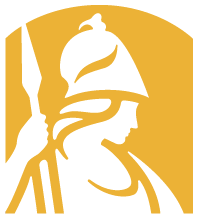February 25, 2026
Student researchers from the UAlbany in the High School program throughout New York will present their original scientific research before peers, teachers and esteemed judges at the University at Albany.
Students who present their research are first nominated by their teacher, then selected by UAlbany in the High School.
All students are welcome to enter the Art & Science Contest and the Science Fiction Contest to be featured at the symposium!
We welcome you to join us!
Contact Us
UAlbany in the High School
University at Albany
1400 Washington Avenue
Management Services Center 312
Albany, NY 12222
Phone: 518-442-4148
Angelo Piccirillo, Co-Director, [email protected]
Leslie Hayner, Coordinator, [email protected]
About the Symposium
Young scientists representing high schools across New York present the results of original scientific research before hundreds of fellow students, teachers, mentors and judges at the University at Albany, in Albany, NY.
These presentations represent the culmination of a three-year Science Research in the High School program that unites students, teachers and mentors in a common research experience. This program has cultivated future scientists from schools in every region of the state.
Out of hundreds of students within the program, approximately sixty will be chosen to present to a team of esteemed judges, across various scientific disciplines. Students will have the opportunity to network with each other, and other professional scientists within their field of study.
In addition to student presentations, the symposium features a keynote address by a current scientist, and networking opportunities for students and teachers to meet scientists and scholars working in a variety of fields.
Presenter Qualifications
Students who wish to present at the symposium must be registered for UHS credit, for ACAS 109, 110, 209 or 210 for this academic year.
Three students may apply per school, nominated by their teacher.
To apply, visit the Student Presenters tab above. The deadline to apply to present is January 14, 2026.
Schedule
The schedule for the symposium is tentative.
| 9:00-9:30 a.m. | Registration Check-in |
| 9:15-10:00 a.m. | Presentation Rooms Open |
| 10:00-10:15 a.m. | Welcoming Remarks |
| 10:30-11:30 a.m. | Presentation Block 1 |
| 11:45-12:45 p.m. | Presentation Block 2 |
| 12:45-2:00 p.m. | Lunch |
| 2:15-3:15 p.m. | Presentation Block 3 |
| 3:30-4:30 p.m. | Presentation Block 4 |
| 4:30-5:45 p.m. | Dinner |
| 6:00-7:00 p.m. | Awards Ceremony |
Awards
Thank you to our sponsors for providing awards.
First Place: $200
Second Place: $150
Third Place: $100
Art & Science Competition: $100
Science Fiction Competition: $100


